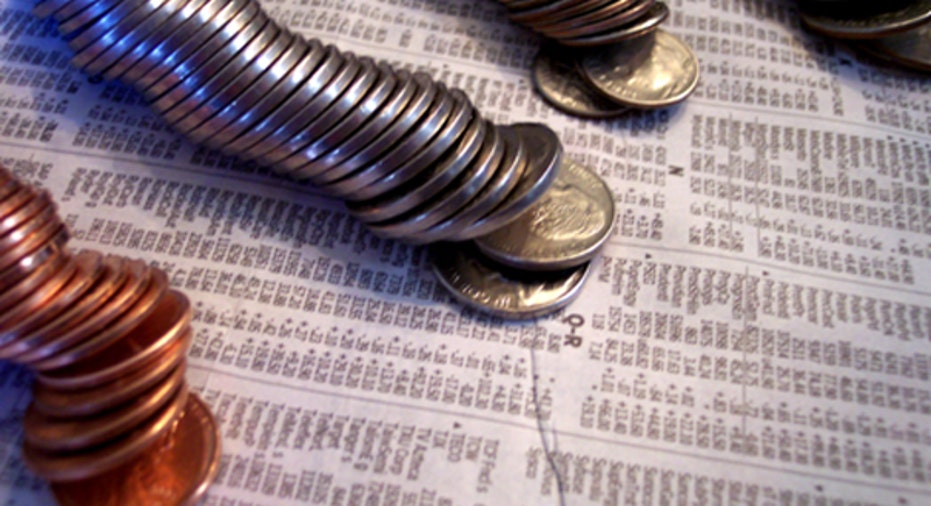The Next Bubble Is A Matter of If Not When

Add to the list of life’s certainties – taxes and death topping that inventory – the inevitability of another financial bubble.
They’ve been a constant of the global markets at least since tulips enthralled Europe in the 1630s. In the past two decades alone investors’ fortunes have risen and fallen with the technology bubble of the late 1990s and the far-more encompassing housing bubble of the 2000s.
In both of those latter cases, the U.S. Federal Reserve played a key role both in fostering the economic environment (mostly by keeping interest rates low) that initiated the bubble and in assuring investors and other market participants that everything was copacetic.
As the dot-com bubble expanded in the 1990s, then-Fed Chief Alan Greenspan warned cryptically of “irrational exuberance,” but spoke far more frequently of “growing productivity” and a “new economy” forged by breakthroughs in technology.
Investors poured money into tech stocks.
Former Fed Chairman Ben Bernanke was touting the strength of the U.S. housing market and the health of U.S. borrowers well into 2007, not long before Bear Stearns imploded amid a rash of mortgage defaults.
Investors (and millions of ill-equipped homeowners) poured money into the housing market.
Now the question is not so much if but when the next bubble will inflate and burst, and what role if any the Fed will play in warning investors that the next financial calamity is lurking around the corner.
Laying the Groundwork for the Next Bubble
Fed watchers are virtually unanimous in their view that the Fed has contributed significantly to each of the two recent bubbles, and helped lay the groundwork for the one many believe is currently propping up the global stock and bond markets.
“The question isn’t did they miss the bubble but did they create the bubble,” said Lance Roberts, chief strategist at STA Wealth Management. And the answer, according to Roberts, is a resounding yes.
Roberts said financial bubble cycles have become self-perpetuating in the last two decades as the Fed has “manipulated” monetary policy in response to a crisis only to create conditions conducive to another bubble, which sets the cycle in motion again.
Witness the low interest rates put in place to address a recession in the early 1990s, rates that helped fuel the decade-long economic expansion that ended when the tech bubble burst around 2000.
Enter the Fed again with more low interest rates to offset a recession combined with lax lending standards and government policies hell bent on promoting home ownership and the result is the 2008 financial crisis.
Here comes the Fed again, this time with the lowest interest rates since the Fed started dictating such things and an extraordinary and unprecedented stimulus program known as quantitative easing in which the Fed purchased trillions of dollars of U.S. Treasuries to pump liquidity into U.S. financial markets.
Booms and Busts
Many analysts believe the Fed’s so-called ‘easy money’ policies initiated in the wake of the 2008 financial crisis have helped push U.S. stock indexes to new records and bond prices to their highest levels in decades.
“By manipulating interest rates the Fed creates circumstances that lead to an expansion in the financial markets that ultimately has to contract,” said Roberts. “In other words we get these booms and busts.”
Another Fed policy contributing to bubbles is the move in recent years toward transparency, said Bill O’Grady, chief investment strategist at Confluence Investment Management in St. Louis.
“The move to become more transparent has fostered the cycle of boom and busts in the asset markets,” said O’Grady.
Starting in 1994, when the Fed released its first statement disclosing changes to the fed funds rate, central bankers have increasingly sought to provide more clarity toward their policies, strategies and future moves. The Fed now releases an almost monthly statement, regular economic forecasts and targets for the fed fund rates. And in 201l Bernanke held the first press conference ever by a U.S. Fed chair, a practically unthinkable event prior to Bernanke’s ascension to the helm.
The thought behind all this transparency is that the Fed has no business acting in secrecy and that markets – and therefore investors -- are better served if they have some idea of how, when and why the Fed does things.
Not everyone thinks that’s a great idea. “It almost invites complacency,” said O’Grady.
‘The Gamble Has Paid Off’
In other words, investors armed with confidence that they know when, how and why the Fed will act have been rushing headlong into assets unchecked by any fears of uncertainty that might lead to restraint.
“What the Fed should do is become increasingly more secretive,” said O’Grady. “If you don’t know what they’re going to do you’re less likely to walk the line right up to the precipice.”
Central bankers are hardly ignorant of the risks associated with their policies, be they low interest rates, an untested bond-buying program or a hard lean toward greater transparency. Take the current low interest rates, the policy most cited for lifting stock and bond prices.
“The Fed is resigned to the fact that the low interest rates are a necessary evil. The consequences of a bubble are much less than the consequences of low growth and economic stagnation,” said Mark Williams, a former Fed examiner who now teaches banking at Boston University.
Williams said members of the Fed’s policy-setting Federal Open Markets Committee are constantly assessing “risk and return” tradeoffs, and (in his view at least) the recent gambles have paid off. While stock and bond prices may be elevated, low interest rates and the Fed’s array of other measures initiated in the wake of the financial crisis seven years ago have promoted economic growth and prevented the U.S. from slipping into another depression.
“It seems to me the tradeoff has been worth it,” Williams said. “So far it appears this gamble has paid off.”



















